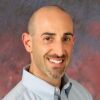You cannot out-exercise a bad diet. These words reflect one of the main challenges providers face when trying to eat healthy, especially during a long, busy shift.
All responders must understand a very simple fact about food, calories and nutrition: To lose weight you must burn off more than you take in, and the only way to win this battle is with better food choices.
We also previously provided you with an infographic on nutrition, and it’s worth going back to this column for a quick review on healthy foods.
How to make better food choices
1. Practice portion control: Simply eat less by eating off of smaller plates, ordering lunch portions instead of dinner portions and only eating half of what you are given. While this can be hard in the beginning, it’s the best way to drop pounds quickly and safely.
2. Avoid the white evils: Bread, pasta, potatoes, rice, mayonnaise and dairy such as milk and cream sauces, are the most common culprits. By eating less food-based simple sugars, you will actually increase your metabolism. Whole wheat bread, vegetable-based pastas, brown rice, almond milk, and mustard are all better choices.
3. Eat colorful foods: Food is color coded; the darker it is, the better for you it is, particularly when it comes to fruits and vegetables. You can’t go wrong with dark fruits like blueberries and cherries, and dark vegetables like beets and red peppers.
4. Drink more water: Hydration is the key to everything. Staying hydrated with water only, instead of drinks containing sugar, will reduce fatigue, cravings, joint pain, and muscle aches.
It also will improve concentration and bowel function. Plus, drinking water during a healthy meal makes you feel full.
5. Slow down: I’ve lost count of how many times I was only a few bites into a meal when the tones went off. We all eat too fast, but we need to make an effort to eat slower.
It takes time for the stomach to tell the brain that you are full. Simply slowing down your consumption will work wonders, and it reinforces why portion control is so important.
6. Avoid bad fats: I saw an ad for a bacon milk shake the other day, and even though it sounds delicious, it’s not worth it. Triple-fried chicken, a French toast meal with 1,420 mg of sodium and a burger with two patties, three different types of cheese, plus fried onions isn’t worth it either.
If you choose to eat this way, the results are very predictable. Make better choices. How to burn it off
 How to burn it off
How to burn it off
When it comes to burning off the fat, it’s really pretty simple — just move.
Make an effort to walk between calls, and you will lose weight. Put a treadmill or elliptical in the day room, walk up and down the driveway, do a few laps on the stairs after each call, and trust me, it will add up in the calorie-burn column.
If you’re feeling playful, don’t be afraid to break out a Frisbee, reaction ball or soccer ball; it’s a great way to pass the time between calls while having fun.
If you want a big burn — and who doesn’t — this is one of my favorite exercise protocols. It’s designed to be done on an elliptical cross trainer, but works well on an arc trainer or a spin/stationary bike. This is a quick cardio/fat burn routine that only takes 25 minutes to complete.
1. Get on the foam roller and roll your legs for five minutes.
2. Set the elliptical to a resistance of four and go at a good warmup pace for 10 minutes.
3. Start the burn by setting a resistance of between 12 and 15, and go as hard as you can for 30 seconds. Then drop the resistance to six for a full minute. Do this cycle 10 times, then bring the resistance back to four for another 10 minutes.
Knock out this fat burning workout three times per week and eat well, and you will be amazed what happens after 45 days.



